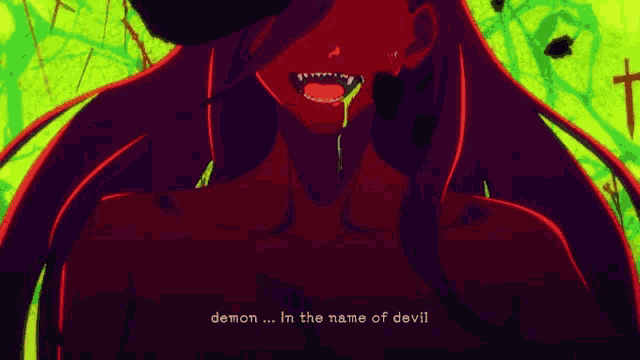Exciting New Releases: ZD Toys Collection
Exciting New Releases: ZD Toys Collection

Chainsaw Man Devil Guide: Strongest Devils, Abilities & Their Fears
August 28, 2025 24 min read
In Chainsaw Man, Devils are not just monsters—they are living, breathing manifestations of humanity’s darkest fears. Every Devil is born from an idea that unsettles people, whether it’s something vast and terrifying like guns, death, or darkness, or even something as oddly specific and mundane as a tomato or a sea cucumber. The intensity of fear directly shapes a Devil’s strength: the more universal and overwhelming the fear, the more terrifyingly powerful the Devil becomes.
This concept mirrors the special grade cursed spirits of Jujutsu Kaisen, who thrive on human negativity. In Chainsaw Man, however, the connection feels even more visceral. Devils don’t just feed on fear—they embody it, turning the intangible into something grotesquely tangible. That’s why names like the Gun Devil, Darkness Devil, or even the Control Devil carry such a chilling weight. The very act of acknowledging them stirs unease, and for Devil Hunters, that unease can be fatal hesitation in the field.
The anime has already introduced fans to several of these horrific entities rampaging through cities and tearing through Devil Hunters with ease. Yet the manga dives much deeper, unveiling Devils that are so conceptually unsettling that readers feel a primal discomfort just imagining them. The Darkness Devil, for instance, is said to have slaughtered an entire squad of Devil Hunters in an instant, and it doesn’t even speak—it simply exists as an overwhelming presence of dread. The Gun Devil, feared worldwide for representing mass violence and warfare, is so powerful that it killed over a million people in mere seconds during its rampage.
What makes Chainsaw Man so compelling is how these Devils aren’t just external enemies—they reflect us. Every Devil is a mirror of collective human anxiety, whether modern or ancient. It’s why Fujimoto’s world feels so raw, timely, and uncomfortably familiar: it’s not just a fight against monsters, but against the very fears we try to bury in the dark.
Although Chainsaw Man is still a relatively new entry into the shonen pantheon, it has exploded into a global phenomenon precisely because of these themes. Devils aren’t simply villains—they are storytelling devices that make fans question the true cost of fear, power, and survival. And while anime-only fans have seen just the tip of the iceberg, manga readers know that some Devils lie in wait, so disturbing in concept and so absolute in power that they redefine what it means to be the “strongest.”
The Eternity Devil – Fear That Never Ends
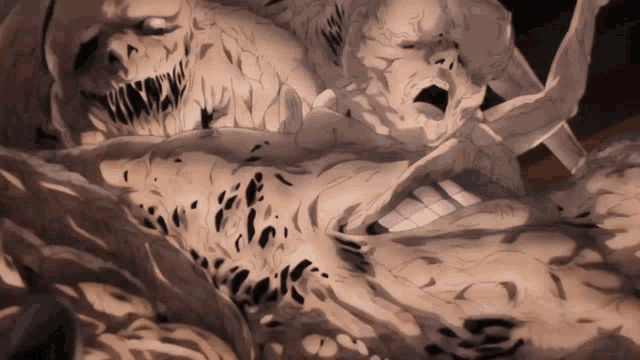
Among the nightmarish figures in Chainsaw Man, the Eternity Devil is one of the most psychologically disturbing. Born from the universal human fear of endlessness—the idea of being trapped in a situation with no escape, no resolution, no end—it embodies a terror that gnaws at the very concept of time and sanity.
What makes the Eternity Devil uniquely horrifying isn’t just its appearance, though that alone is the stuff of nightmares. Its true body is a mass of twisted flesh shaped like an infinity symbol, lined with gaping mouths and unblinking eyes that leer from both sides. Inside, its stomach is not flesh and blood but an infinite purgatory—a writhing tide of dismembered arms, mangled heads, and twisted bodies fused together. Victims unlucky enough to fall into this hellscape find themselves in a pocket reality where time itself is frozen. No matter what happens outside, inside the Eternity Devil’s stomach, there is only endless suffering.
What’s worse is how it thrives on that suffering. The Eternity Devil isn’t just content to kill—it delights in prolonging the agony of its prey. It feeds on panic, fear, and despair, savoring every scream as though it were nourishment. To deepen the torment, it can spawn a grotesque avatar within its domain, a malformed monster that acts as its hunting vessel, ensuring that its victims never know peace.
Denji’s confrontation with the Eternity Devil is one of the manga’s most chilling arcs, as he becomes trapped with fellow Devil Hunters in its reality. With no way out and no time passing in the outside world, the Devil offered Denji’s companions a grim bargain: sacrifice him, and the Eternity Devil would release the rest. This moment tested their trust, paranoia, and desperation in ways that revealed just how dangerous Devils truly are—not only physically, but psychologically.
And yet, despite its terrifying abilities, Denji’s sheer recklessness turned the tide. Rather than fear death or suffer despair, Denji dove headfirst into battle, attacking the Devil over and over without pause. In a twisted irony, the Eternity Devil, which existed to thrive on endless fear, was undone by Denji’s endless willingness to fight. Exhausted and worn down by Denji’s unrelenting chainsaws, it begged him to finish it.
Still, even after being slain, the Eternity Devil later resurrected—because eternity, after all, cannot truly die. Its return is a grim reminder of the metaphysical nature of Devils in Fujimoto’s world: ideas as potent as infinity don’t vanish, they linger, waiting for fear to make them whole again.
Though it ranks low compared to world-ending Devils like the Gun Devil or Darkness Devil, the Eternity Devil earns its place in the pantheon of terrifying beings for one reason: it represents a uniquely human dread. Not pain. Not death. But the unbearable horror of never escaping, never ending, never finding peace.
Katana Man: A Demonic Reflection of Denji
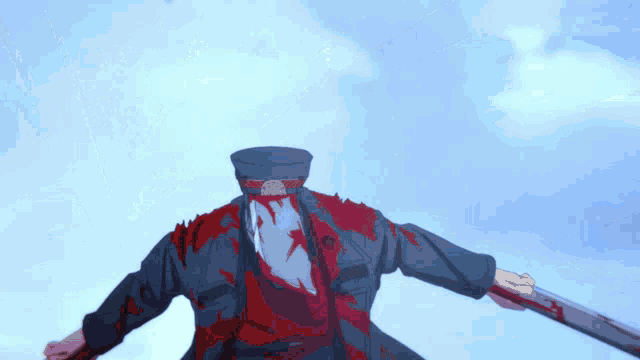
In Chainsaw Man, the Katana Devil fuses with a grieving grandson—the unnamed mob boss's heir—to become Katana Man, a devil-human hybrid twisted by vengeance. His target? Denji’s heart—the Chainsaw Devil itself. Driven by hatred, he merges with the Devil born from one of humanity’s darker fears: the blade.
A Face That Cuts to the Bone
His hybrid form is terrifyingly symmetrical to Denji’s: swords sprout from his arms and his skull. His face is stripped of skin, revealing an oversized jaw and serrated teeth, crowned by a sword where his forehead should be—an image that’s as demonic as it is unforgettable.
Revenge-Painted Blade
Katana Man wants Denji’s heart not just for power, but out of pure vengeance. He blames Denji for his grandfather’s death—ignoring context or reason. As one fan notes on Reddit, “Love can make facts irrelevant; Katana Man knows Denji had reason, but he doesn’t care.” Another commenter highlights how he embodies the “perfect foil” to Denji: privileged, educated, yet blinded by emotion.
Lethal Technique: Sword-Draw Dash
Katana Man’s signature move, Sword-Draw Dash, is a kill shot in motion. Crouching low, he slashes forward at speeds that blur into teleportation, severing limbs or slicing foes in half mid-dash. He brutally cuts Denji in their first encounter, only to be defeated in their second when Denji rallies.
Built to Survive
As a Hybrid—part devil, part human—Katana Man boasts terrifying durability. He heals through blood consumption, survives dismemberment, and cannot die unless his left hand is removed. Even then, he can be revived. This near-immortality makes him one of the most persistent threats Denji ever faces.
More Than a Monster—A Mirror
Despite his brutality, Katana Man isn’t just a villain—he’s a mirror held up against Denji. His quest isn’t just for revenge; it’s an exploration of the toxic sides of grief, honor, and blood loyalty. He’s a terrifying reminder of what grief untethered by truth can become.
Power
In Chainsaw Man, Power isn’t just chaos wrapped in sharp teeth and arrogance—she’s the embodiment of the Blood Devil’s ferocity. As a Fiend, she walks in a human corpse possessed by a devil, yet she never lets you forget what she truly is: wild, unpredictable, and terrifyingly strong.
Strength That Even Devils Fear
Power’s very presence unsettles other devils. Blood is life, and she bends it into weapons with raw instinct. Her iconic blood-crafted mallet is just the beginning. Spears, blades, and traps flow from her veins as though her very existence is war itself. When pushed to her Devil form, she unleashes Thousand Tera Blood Rain—a storm of countless swords descending with the inevitability of death itself.
Regeneration Beyond the Norm
Like all Devils, Power can heal by drinking blood, but hers is no ordinary recovery. Her regeneration soars when she consumes the blood of powerful Devils, making her rebirth swifter, fiercer, and more violent. It’s why her survival in battle feels inevitable, no matter how much she’s torn apart.
A Fate Sealed, A Legacy Carved in Blood
For all her swagger, her end came in an instant—erased by Makima with devastating ease. But Power was never just her death. Her blood lived on, defiant even in defeat. Denji later used it to stand against the Control Devil, proving that even after death, Power’s wild spirit roared in rebellion.
Reze
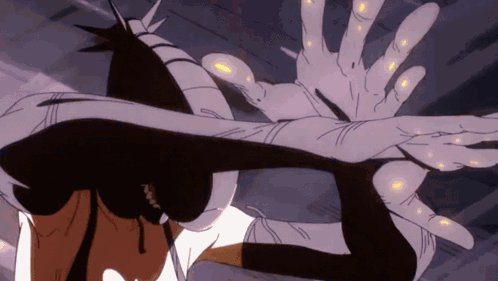
Reze, known as Bomb Girl, is arguably one of Chainsaw Man’s most captivating—and lethal—antagonists. She starts as a seemingly ordinary café worker, but beneath the quiet facade lies a tragic weapon: the very personification of explosive fear.
From Love Interest to Living Bomb
Reze is a human-devil hybrid fused with the Bomb Devil, sent by the Soviet Union to steal Denji’s heart. Her transformation isn’t a uniform glow—she literally pulls the pin on her neck like a grenade, turning her humanity into kinetic chaos.
Detonating Powers Beyond Imagination
Once transformed, Reze becomes an avatar of destruction:
-
Explosive Creation: She unleashes deadly blasts from her hands and feet—powerful enough to level buildings.
-
Self-Detonation as Strategy: In a brilliant twist of horror, she can detach and launch her own head like a bomb, using her decapitated body as a decoy.
-
Torpedo Limbs: Arms or legs can transform into explosive projectiles—powerful and precise.
-
Immortal Regeneration: Reze can heal catastrophic injuries—including decapitation—through blood consumption or trigger transformation. The only way to truly kill her is to destroy her devil’s heart.
A Fatal Romance
Reze’s allure is disarming. She seduces Denji with her charm, building genuine affection—only to later betray him with her revelation. Their relationship plays like a ticking time bomb, exploding into emotional devastation.
A Star in the Spotlight
Her arc culminates in Chainsaw Man: Reze Arc—a film set to premiere in Japan on September 19, 2025, and in the U.S. on October 29, 2025. The movie promises to bring her explosive story to life with the same gritty emotion that rocked fans in the manga. Plus, the soundtrack is already creating buzz—Kenshi Yonezu composed the theme song Iris Out, with an ending theme Jane Doe, a collaboration with Hikaru Utada.
Why Reze Stands Out
-
Multidimensional Antagonist: She’s a fascinating blend of danger and empathy—a lover and a weapon.
-
Visual & Emotional Impact: Her transformations are both shocking and poetic—beautiful as they are lethal.
-
Narrative Turning Point: The Reze arc reshapes Denji’s view of love, trust, and betrayal, ultimately propelling the story forward in ways no other character did.
The Ghost Devil
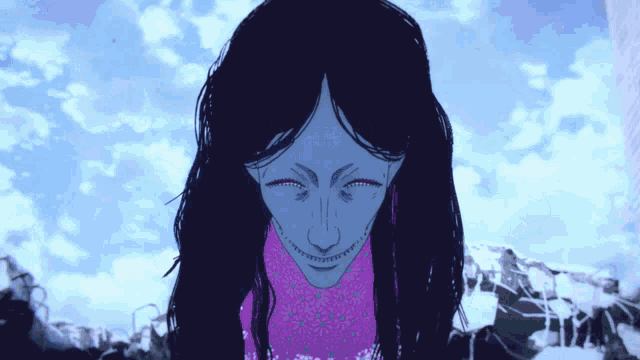
In the world of Chainsaw Man, the Ghost Devil stands out as a harrowing embodiment of our primal dread: the fear of the unseen, of spirits, of the unknown.
A Form Built From Fear Itself
The Ghost Devil is no ordinary monster—its body is intangible, hovering like a translucent specter, with flowers or pale limbs that drift without weight. Its head is desiccated, features sewn shut, channeling pure silence. It doesn’t see with eyes—it senses fear. If you don’t believe in ghosts, it may not recognize you at all. But for those trembling with dread, it's drawn inexorably close.
Contract Born of Sacrifice
Himeno’s bond with the Ghost Devil is tragic and poetic. She gives her right eye in exchange for control over its invisible arm—a limb capable of ripping through flesh with chilling elegance. In a final act of desperation, she offers her entire body, unleashing the Ghost Devil in all its full, devastating form to protect
A Protector Turned Haunting Presence
For Himeno, the Ghost Devil is more than power—it’s a companion. Even after her death, it carries Aki’s first cigarettes, a haunting sign of loyalty beyond flesh and fear.
Limits and Weaknesses
Despite its terror, the Ghost Devil has vulnerabilities. Physical weapons with special properties, such as the Snake Devil, can affect it even when intangible. Worse, if you can suppress fear—if you stand resolute and unafraid—it simply cannot sense you.
Why the Ghost Devil Resonates
It’s not just another dark figure lurking in a manga; the Ghost Devil is a mirror to our own fears. It taps into what scares us most—what we can't prove, see, or name—and turns that into something tangible.
Here’s what fans from Reddit have to say:
“I guess maybe ghost was telling Himeno: ‘Hey, if you use my hand, I’ll get clapped—so I wouldn’t recommend.’”
“Himeno’s contract with the Ghost gives her passive use of a devastating invisible arm—a subtle power that packs more utility than some flashy contracts.”
The Ghost Devil is disturbing not just for its shape—but for what it represents: the terror of the inexplicable, the cost of power, the bonds that outlive mortality. It’s a quiet force that lingers in the dark corners of your mind—long after you've turned the page.
Curse Devil

In Chainsaw Man, the Curse Devil embodies a horror as old as resentment itself: the fear and power of curses. When Aki Hayakawa accuses his prey with a nail-stab ritual, he doesn’t just strike flesh—he invites a devouring spirit born from human bitterness.
A Ritual That Reeks of Folklore
This ritual echoes the unsettling ushinotoki-mairi, a traditional Japanese curse where a scorned woman, dressed in white, hammers nails into an effigy—or a sacred tree—during the hours between 1 and 3 a.m. It’s a practice meant to doom someone through sheer spite. In Chainsaw Man, Aki’s "curse spike" replicates this eerie timelessness: stab your target three times, and the Curse Devil spectrally emerges. The reference is both poetic and terrifying.
A Horror Made Extinct and Invisible
When summoned, the Curse Devil manifests as a towering, two-headed skeleton—one skull eerily human, the other grotesquely deformed, complete with jagged teeth and eye-slits. Its frame is gaunt, ribcage extravagantly open, and hands tipped with claws made for tearing.
Even more terrifying, it can turn invisible. In one instance, Denji and Beam suffered a cruel fate—they were impaled and crucified in midair, even as the Curse Devil itself remained unseen. The horror is in what you can’t see, but feel.
The Fear That Makes It
The power of the Curse Devil doesn’t come from brute strength but from the dread that its rituals instill. Curses themselves are a form of emotional manifestation, fueled by desperation and the desire for retribution.
Why the Curse Devil Lingers in Memory
-
Folkloric Echoes: The way it’s summoned taps into ancient Japanese traditions, giving a real-world eeriness to fictional horror.
-
Fear Weaponised: It isn’t just a monster—it’s a metaphor for emotional vengeance turned into violence.
-
Unseen Terror: Its invisibility makes it a phobia incarnate—fear of the unknown, the intangible threat that strikes without warning.
-
Narrative Power: The Curse Devil’s presence forces characters—and readers—to confront how far fear can take you, and where revenge may lead.
Angel Devil

In Chainsaw Man, the Angel Devil is a haunting irony—an angelic figure with a halo and wings who can kill with a single touch, exploiting our deepest fear: mortality and the passage of time itself.
Lifespan as Weapon
With just a touch, Angel can absorb a human’s remaining lifespan—silent, painless, yet irreversible. Even a brief touch can rob someone of months. For instance, when Aki grabs his hand, Angel estimates he siphoned two months off Aki’s life.
That stolen lifespan doesn’t vanish—it becomes fuel. Angel can transform it into lethal weapons through his halo, with power calibrated by the years he spends:
-
5 years → a golden sword that vanishes its target with no trace
-
10 years → a more formidable sword, though its full strength is untested against Makima
-
100 years → a heavy cleaver-like sword shown during Makima’s control
-
1,000 years → a massive spear, powerful enough to wound Chainsaw Man in his weakened state
A Gentle Giant Haunted by Conscience
Despite his fearsome abilities, Angel is no cold executioner. He’s lazy, emotionally exhausted, even reluctant to use his own power. In moments of conflict, he hesitates—not due to lack of power, but because the souls of those whose life he steals visit his nightmares and blame him.
Makima once declared Angel the second strongest Devil Hunter in Division 4—only behind Captain Kishibe. A terrifying potential, often subdued by his guilt and lethargy.
Strength in Form—And in Flight
His wings aren't just for show. Durable enough to deflect bullets, they prove that Angel’s body blends beauty with brutal defense. His reflexes are superhuman—he can catch bullets mid-flight and even keep pace with Quanxi, a supersonic killer.
Fan Reflections
“Whenever a living thing touches Angel, he will rapidly drain the amount of time they have left to live.”
“The strength of the weapon is determined by how many years of siphoned lifespan he puts into the weapon.”
Why Angel Devil Both Frightens and Haunts
The Angel Devil is more than a character—he’s a concept: life turned into power, mercy entwined with deadly consequence. He embodies both the weight of death and the remorse that comes with wielding such force. In him, Chainsaw Man explores how even ‘benevolent’ beings can become tragic weapons—and how guilt can be as powerful as any blade.
The Snake Devil
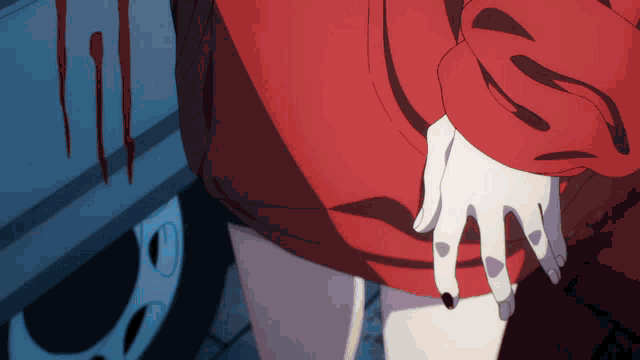
Introduced near the end of Season 1 (Episode 8), the Snake Devil appears without warning—but its impact is unforgettable. Manifesting as an enormous serpent with unnerving features, this creature has a jaw composed of interlocking human arms and hands, with green-scaled skin and a single red eye framed by pitch-black sclera. It’s no wonder fans felt the unease of ophidiophobia (fear of snakes) amplified tenfold upon his appearance.
Instant Dominance: Devouring the Ghost Devil
During the Katana Man arc, when all hope seemed lost, Akane Sawatari calls upon the Snake Devil to “swallow it whole.” In a heartbeat, the Ghost Devil is consumed—decapitated and erased from the battlefield. This act not only showcases the Snake Devil’s sheer destructive ability, but also its dominance over other supernatural beings.
Then, in a chilling twist, Akane commands the Snake Devil to spit it out. The Ghost Devil re-emerges—fully healed and now bound under Akane’s control. It’s a fearsome ability: consume your enemy, then summon them to fight for you.
Cost of Power: Nails and Blood
Every command heeded comes at a steep price. Akane sacrifices a fingernail each time she wields the Snake Devil’s power. When she orders it to release the Ghost Devil, the cost becomes physical—a nosebleed that betrays the internal strain this power inflicts
Symbolism and Fan Reflections
The Snake Devil taps into one of humanity’s most basic fears—snakes. On Reddit, fans amplified its horror:
“Killed Ghost in an instant and made it obey Akane after spitting it out… either she’s a godlike negotiator, or the snake is so strong it only values what it did at two fingernails...”
“Snakes are seen as evil… there’s reasoning behind this. Snake devil no-diffs the Ghost Devil…
Its form—serrated with human limbs—melds primal dread with visceral disgust. It isn’t just a monster; it’s a nightmare made real.
Why the Snake Devil Deserves More Spotlight
| Attribute | Significance |
|---|---|
| Instant annihilation | Erased an ally mid-fight—swift, brutal, and effective. |
| Shape-shifting utility | Turns enemies into puppets. That is force and control woven into one. |
| Sacrificial cost | Akane’s suffering humanizes the power. Magic demands tolls. |
| Symbolic horror | Embodies fears ancient and visceral—and weaponizes them. |
The Snake Devil isn’t just a threat. It’s a statement—that fear distilled into a form can dominate unmatched, command loyalty, and leave terror in its wake. It’s a force we saw too little of—but feel deeply.
The Famine Devil

In the grand tapestry of devils, the Famine Devil—known as Fami—renders a surprising twist. Unlike her siblings among the Four Horsemen, she doesn’t revel in destruction. Instead, she warily shields humanity from her own kind.
Not a Harbinger… but a Protector?
While her sisters—Control, War, and Death—embody primal terror, Fami operates with a twisted utilitarian heart. Her mission? Prevent humanity’s extinction. In her view, extinction means the end of food—the one consistent joy she cherishes. As she states, the apocalypse would rob her of “her favorite foods,” a reality she deems the “worst scenario imaginable.”
This places her in direct opposition to the Death Devil. That’s why Death impersonated Famine—using her name and identity to pursue a more ruthless purpose, while the real Fami plotted behind the facade.
Life Absorption—A Power as Grim as It Is Effective
Fami’s signature ability is life absorption: any living being she physically contacts is drained to a desiccated husk—dead, gone, forever. This isn’t random cruelty; it’s a desperate tool in her arsenal to fuel her survival and her broader schemes. When fatally injured, she can instantly heal—even from her body being dismembered—by siphoning life from much weaker beings such as ants.
A Complex Path of Morality
Fami is not benevolent—she’s pragmatic. She traps Asa and her friends, unleashes devastating devils, and manipulates events ruthlessly. But every dark decision traces back to her strange devotion: the preservation of human civilization—no matter the cost.t
According to manga chapters and Reddit analyses, her goal extends beyond masking the prophecy—she wants to empower her sister, the War Devil (Yoru), so together they could stand against the coming threat of the Death Devil.
Symbolism That Shines Through Her Cover Art
On Volume 21’s cover—aptly titled Barf!—Fami stands clutching roses, tears streaming down her face. The contrast behind her—a sickly red tree shadowed by lush green foliage—symbolizes life and death warring for dominance. Roses suggest beauty laced with pain, a perfect metaphor for Fami’s protective but painful nature.
Fans See the Heart Behind the Hunger
Redditors offer nuanced interpretations:
“Fami looks as human as the Control Devil… assuming this trend is true, in what way do you think Fami loves humanity?”
And a provocative theory:
“The Famine Devil’s power—turning the starved into pawns—may mean ‘turning those who need something they don’t have into her pawns.’”
The Famine Devil isn’t just another monster to fear. She is fear given conscience—a being shaped by an insatiable love for life that compels her into twisted heroism. Her story is a reflection on hope and hunger, sacrifice and survival. In her, Chainsaw Man masterfully shows that even devils can yearn for humanity’s preservation—not destruction.
The Gun Devil

Few entities in Chainsaw Man chill the soul like the Gun Devil. Born from the accumulated dread of firearms, this Devil doesn’t just represent fear—he embodies it in its purest, most lethal form.
Born of Fear and Media Hysteria
As gun violence surged across the globe and news cycles amplified the terror, that collective fear coalesced into existence. Then came his debut: in just five minutes, the Gun Devil killed over 1.2 million people. Families vanished, cities were reduced to ash, and humanity was forced to live in the shadow of something unstoppable. Among those erased was Aki Hayakawa’s family, setting him on his tragic path of vengeance.
A Body Made of Bullets
The Gun Devil’s body is literally ammunition—flesh sculpted from guns, bullets, and screaming steel. His existence is fragmented, with chunks of him distributed like nuclear stockpiles among the world’s superpowers. Even shattered, his fragments still kill, carrying an aura of mass slaughter. To summon him requires catastrophic sacrifices, like when the U.S. President traded away one year of every citizen’s life.
Death at Supersonic Speed
The Gun Devil’s movements defy reason. He tears across landscapes at speeds over 1,700 km/h, slaughtering anyone in his path. What makes him even more terrifying is his precision. He doesn’t kill blindly—his bullets pierce through names, through lists, through political leaders and innocent children. Death, under his hand, becomes both random and intentional, like destiny written in gunfire.
A Devil That Became Politics
The Gun Devil isn’t just a monster. He is the ultimate metaphor—an embodiment of the arms race, a symbol of paranoia and control. Nations hoard his pieces like nuclear warheads, too afraid to destroy them, too afraid not to keep them. His existence shifted the world order, reshaping governments, policies, and even daily life.
A Legacy Written in Fear
Even when absent, his name alone spreads terror. His body may be broken, but the fragments still live on, shaping new devils and feeding into humanity’s endless fear of violence. The Gun Devil doesn’t need to be alive to haunt the world—his story is enough.
He stands apart not just because of what he did, but because of what he represents. He isn’t simply the Devil of guns—he’s the physical incarnation of humanity’s obsession with destruction, of our inability to stop pointing weapons at one another. A villain made of bullets, yes—but also a mirror.
The Control Devil
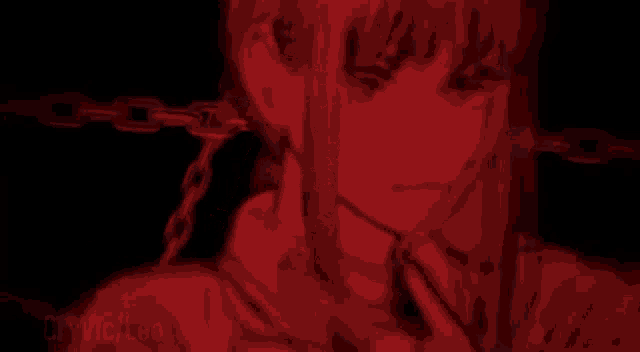
Makima isn’t just a villain—you feel her presence the moment she utters a soft promise or casts a sly smile. As the Control Devil, she is the embodiment of the fear of domination—a fear so deep that humanity shaped her into being.
She lures people with warmth only to snare them in invisible chains. With a blink and a gesture, Makima can shatter her targets with a crushing force drawn from the air itself. She controls lives through coercion, contracts, and mind games—turning devils, humans, and even innocents into willing puppets under her will.
Control Beyond Flesh and Fear
Makima’s abilities aren't limited to telekinesis. She can implant thoughts, wipe memories, and usurp devils’ powers, living rent-free in minds she deems inferior. With subtle rituals—a blindfold, a name inscribed on her hand—she nips at the threads of control until her victims unravel.
Even death itself couldn’t silence her. Her body was killed—but any harm intended for her was rerouted to another victim, courtesy of a diabolical contract she penned with the Prime Minister.
The End of Makima—and the Birth of Nayuta
Denji’s final “act of love” destroyed her, but it couldn’t dismantle the concept she embodied. The Control Devil reincarnated as Nayuta, a young girl found in China and brought to live with Denji as a sister.
Nayuta shares those hypnotic eyes and chains of influence—but her heart is different. Though still born from control, she uses her powers with affectionate mischief, guided by the only love she’s known: Denji. Her personality mirrors the child he raised—caring, curious, mischievous, and protective.
A Devil with a Longing
Behind the horror of Makima—behind the manipulation and fear—rested a longing: to be more than an overlord, to feel human connection. In a dream, Pochita revealed her true desire was a family, something she never could genuinely achieve.
With Nayuta, that dream finds a second chance. Though made from the same fear, she’s growing alongside love, care, and laughter instead of control. In her, the Control Devil’s legacy shifts—from horrified idolization to sibling warmth. Fans noticed:
“I’ll stay with you… for the rest of your life.” — Nayuta
A haunting echo of Makima’s final words: “You belong to me now. We’ll be together forever.”
Makima was fear incarnate—slippery, elegant, devastating. Her power lay not in strength but in the quiet, sinister comfort she offered before she struck.
Nayuta, however, is an invitation. A chance that fear could one day give birth to tenderness. She holds her Daddy’s affection close—rather than wielding invisibility and control, she toys with it, giggles with it, shares it.
Together, they’re the same soul in different frames—one molded by terror, the other healing in love.
The Falling Devil

The Falling Devil isn’t just about heights. She’s the living embodiment of basophobia—the primal terror of falling—and the emotional spiral into despair. Yet, calling her terrifying doesn’t capture how deeply unsettling her powers are.
A Manifestation of Mass Hysteria
Her first appearance is surreal: a towering chef-like figure made from corpses, assembled from humans she manipulated into suicide. With a clap, she shattered their will and forced them off balconies, weaving their bodies into her avatar. Minor devils can seldom bend human will—but she made them end their lives. That’s the power of primordial fear at its most grotesque.
The Dish Terror: Trauma Served Cold
She introduces herself as if in a culinary drama, promising: “Those who don’t finish their food will taste death.” Every targeted victim is made to relive their greatest trauma. As their heart sinks in pain, gravity flips—and they fall upward, ascending until they vanish through a door in the sky. Where does it lead? Likely to Hell itself. Leap into despair—or be lifted into oblivion.
Earth-Shaking Power
The Falling Devil doesn’t stop at mental manipulation. She reshapes the world. Entire cities tremble under her gravity shifts—cave-ins, earthquakes, landslides. Buildings tear apart or rise as though the planet itself is bending to her will. In some frames, skyscrapers bend like paper.
A Hybrid of Mind and Force
She weaves psychological horror with raw power. Not only can she flood your mind with trauma, but she also telekinetically dismantles your physical surroundings to punish you. Even Denji, in his hybrid peak, couldn’t permanently harm her. Every blow is irrelevant—the Falling Devil rebuilds herself mid-conflict.
Fans Feel the Terror
On Reddit, admirers and analysts echo the uncanny blend of horror and empathy:
“The Falling Devil… has one mission: serve a five-star meal. Asa Mitaka is the main course...”
“She can... force people into suicide... tear an apartment building apart, then rebuild inside Denji’s stomach after being eaten.”
It reads not just like power—it feels cosmic. She is fear made manifest, both subtle and omnipotent.
Why the Falling Devil Sticks with You
Consider:
-
Emotional Warfare: She doesn’t just attack your body—she dissects your mind, weaponizing memories and grief.
-
Uncontainable Threat: She defies physical limits—gravity bows to her, structures crumble in her presence.
-
Inescapable Presence: True primal fear doesn’t die. It lingers in our heads. She is proof.
Yoru, the War Devil

Yoru—the War Devil, one of the dreaded Four Horsemen—stands as one of the most formidable entities in Chainsaw Man. Sharing her vessel with Asa Mitaka, she creates a haunting duality: Asa’s human consciousness lingers, clashing and coexisting with the cold, calculating hunger of war itself.
Her ability is both terrifying and poetic—anything that belongs to her can become a weapon. Objects, people, even Devils themselves can be reforged into blades of slaughter. What makes it worse is her intimacy with ownership; a glance, a bond, a claim—and suddenly, what you thought was yours is sharpened into her arsenal.
But Yoru has not always stood at this height of power. Throughout the 20th century, as humanity slowly strayed away from global wars and mass conflicts, her strength waned. Fear feeds Devils, and the fading shadow of constant war meant her dominion dulled. Yet in our modern era, with nuclear weapons once again looming in headlines and research projects, her power surges back. The whisper of annihilation rekindles her throne.
That resurgence was crystallized in her effortless defeat of the Primal Falling Devil, a being born of humanity’s oldest, most instinctive fears. In doing so, Yoru proved she wasn’t merely a relic of humanity’s violent past—she is the drumbeat of conflict that never leaves us.
More than that, she carries an ominous responsibility: she alone can prevent the Nostradamus Prophecy from unfolding. The world-shattering event, tied to the return of Devils beyond imagination, places her in a paradoxical position—destroyer, yet potential savior.
Still, even with her reclaimed power and terrifying abilities, there remain a handful of Devils whose names eclipse even hers. Four beings in existence are considered stronger than the War Devil herself—a chilling reminder that in Chainsaw Man, no Devil stands unchallenged.
The Aging Devil

The Aging Devil—a towering symbol of gerascophobia—is not just a creature of horror, but a nearly existential force, born from humanity’s most universal dread: growing old.
A Withered Monarch of Time
This Devil is grotesquely beautiful: a gaunt, skeletal figure draped in sinewy flesh, riddled with holes—one where a heart should beat. Its face is surreal: a smooth mask with only a mouth, connected to split halves of an aged visage by viscous strings. It sits on a throne of flesh and bone, propped up by two handless people, tongues and teeth writhing at the base.
Resentful of Youth, Desiring Oblivion
Appearances can be deceiving. Though often neutral, the Aging Devil’s contempt for youth is palpable. Children, who do not fear aging, provoke its ire. That’s why it demanded the sacrifice of 10,000 Japanese children, ages zero to nine, as the price for being devoured—erasing aging itself from existence.
Time Warp and Nightmarish Domains
The Aging Devil wields uncanny powers over time and space. With a swipe, it halts bullets mid-flight. It can send adversaries into an alternate realm—a lush forest with a haunting calm where time doesn't pass. There, hunger and death don’t exist, but sanity does—until it buckles under the weight of centuries. Only after 1,000 years, transformed into a tree, can one return to their body.
This realm resonates with Dante’s imagery of souls trapped in vegetal forms—a poetic punishment for losing one’s essence.
A Deal Wrapped in Corruption
The Japanese government, spearheaded by corrupt finance minister Hasegawa, struck a disturbing deal. They agreed to sacrifice thousands of children to effectively eliminate aging—a power they believed would fuel the genesis of a new “evolved”
Against All Odds, a Flawed Overpower
Though astonishingly formidable, the Aging Devil wasn’t unbeatable. Denji, Yoru, and Yoshida tricked it into being trapped in its own realm, forcing it into a fragile truce.
Still, fans point out how its full horror was subtly delivered—powerful yet muted—unlike the overt chaos of other Primal Fears.
A Mirror to Our Own Fears
Reddit users dive deeper:
“Youth is naive optimism. Aging is cynicism. When that’s all that remains, sacrifice becomes easy.”
“The Aging Devil wants to be erased—even offers itself—in exchange for children’s lives. It’s a toxic mirror of societal neglect of idealism.”
These reflections hint at its true tragedy: a being so exhausted by time that oblivion seems a relief.
The Aging Devil isn't simply terrifying—it's a philosophical tremor. It confronts us with the quiet terror of life’s inevitable decay, the erosion of spirit, and the cost of immortality. In his fleeting frailty lies the weight of centuries, and in his demand for sacrifice, a reflection of humanity’s darkest capacity for self-preservation.
Darkness Devil
/https://fbi.cults3d.com/uploaders/17588841/illustration-file/6688abed-88a0-42aa-8c29-8df6e4aa82c7/ZBrush-Movie.gif)
The Darkness Devil isn’t just another foe—it is the primal embodiment of darkness, a fear so ancient it predates humanity itself. A Primal Fear Devil, it has never known death or defeat, transcending time as the most formless and unspeakable of nightmares. It lurks not just in shadows, but in the very instinctual terror of what hides beyond perception.
A Form That Defies Comfort
Imagine something so unsettling it unfolds in your memory as dread frozen in ink. The Darkness Devil is assembled from emaciated human bodies—two acting as legs, four as torso segments—each bearing a different, disturbing visage: stitched mouths, empty eyes, fragmented expressions. Atop this grotesque collage looms a pterodactyl-like skull. It's a being that bleeds existential horror: darkness made eye-tingling flesh, every twisted limb a silent scream.
Fear Without Words
There’s no dialogue, no growl, no monologue—its wrath speaks in absence. Legends say that even tiny acts of hostility toward the Darkness Devil can end in instant death, as if it anticipates conflict and extinguishes it before it blooms. In Hell’s grand hallways, it emerged as Denji and the hunters stumbled through, maiming stronger devils in mere seconds.
Beyond Power—A Cosmic Presence
This Devil doesn’t just wield shadows—it engulfs realms. It can stretch ink-black darkness across landscapes, summon blades of pure oblivion, and crush enemies with unseen force. Its likeness is less a monster and more a Lovecraftian force of absence, an intelligence that shifts the rules of battle without strategy or intent.
Death Devil

Below Darkness, yet towering above most—stands the Death Devil, also dear and terrifyingly fondly known as Li’l D. She’s not just a Horseman—she’s the primal puppet-master of destiny, death’s final signature.
Immortality Writ Large
Death is not part of a cycle; she is its terminus. She cannot die—not even her own will can unmake her. Even after removing her organs, she laughed as life spilled into oblivion, untouched.
Rebirth, Control, and Absolute Authority
Resurrection is her domain—turning corpses into pawns. Devils that kill for her become forever bound. Famine, Falling, Fire—once primal powers now whispered under her thumb. She tills the soil of fear, cultivating obedience.
The Prophecy’s Gatekeeper
She stands at fate’s cusp. The Nostradamus Prophecy, a devils’ apocalypse, is hers alone to halt. Death can’t be broken—but perhaps she can be reasoned with… or manipulated.
Chainsaw Devil (Pochita): The Ultimate Erasure
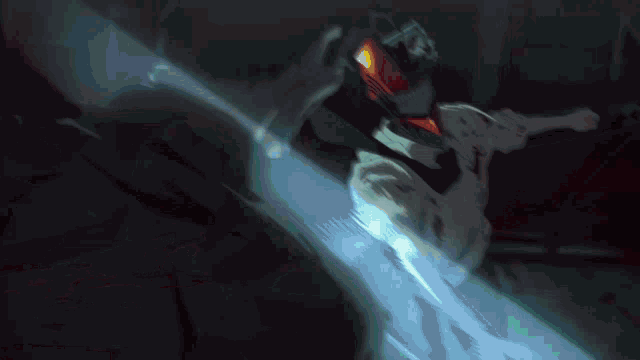
Pochita is no ordinary devil—he is the Chainsaw Devil, the one every other devil fears. He doesn't sway with danger—he erases it.
Shredding Existence Itself
By consuming other devils, the Chainsaw Devil doesn’t just destroy them—he cancels them out of history. Their concepts, their names, vanish from every soul. Fear itself recoils at his teeth.
Humanity's Hidden Savior
Ironically, his silence keeps calamity’s darkest corners unseen. Holocaust, world wars, plague—the Chainsaw Devil shields us by erasing the devils behind those horrors from memory. Every devil devoured is a forgotten nightmare; every consumed fear, one less shadow over our collective mind.
Why They Matter
These three Devils—Darkness, Death, and Chainsaw—aren’t just powers. They are forces built from humanity’s oldest fears: endless night, finality, and oblivion. Each shapes Chainsaw Man with cosmic weight:
-
Darkness Devil reminds us: Some fears have no source—we feel them before we see them.
-
Death Devil teaches: Fear can never extinguish death—but control can shape its aftermath.
-
Chainsaw Devil shows: Erasing fear can make us safer—until we forget what bravery once meant.
From the ominous presence of the Darkness Devil to the apocalyptic might of the Death Devil and the reality-erasing terror of Pochita—the Devils of Chainsaw Man are not just monsters, but living embodiments of humanity’s deepest fears. Each Devil is a reflection of us, a mirror of what terrifies us most. And that’s what makes them unforgettable.
For fans who live and breathe anime, now’s your chance to bring a piece of that world home—explore our exclusive collection of Chainsaw Man Click here to explore the Chainsaw Man Collection.
Subscribe
Sign up to get the latest on sales, new releases and more …

